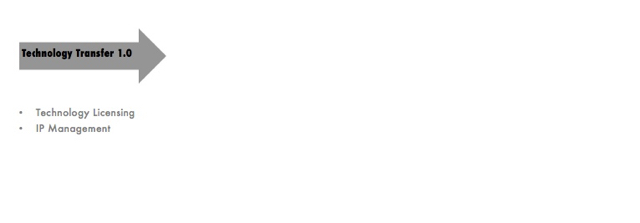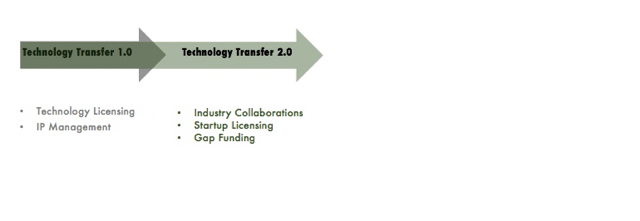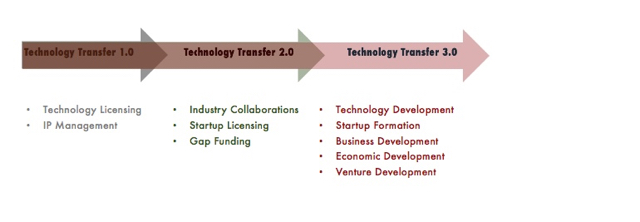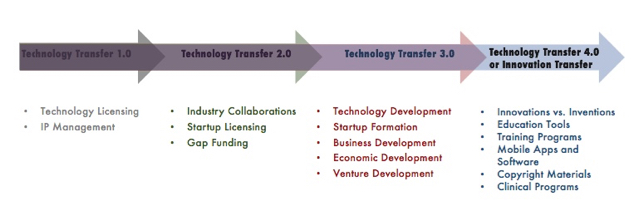Operations, Strategic Planning & Policy Support
Effective management depends largely on leadership. But leadership doesn’t exist in a vacuum. Program objectives must be aligned with the goals and policies of the university, and need to be responsive to the changing environment.
The Evolution of Technology Transfer
Our profession has evolved from the Society of Patent Administrators to the Association of University Technology Managers and, we do much more than patenting and licensing; licensing however, remains the primary performance measure on which we are evaluated. Increasingly, technology transfer functions involve responsibilities such as MTAs, SRAs, economic development and business development. Essentially the profession has moved from what we call “Technology Transfer 1.0” in the 1980s to a “Technology Transfer 3.0” model of the last decade that incorporates all of the above functions.
The profession continues to evolve as we speak. Universities have started looking at innovations – not only from the traditional STEM fields, but also from social sciences, especially in the areas of educational tools and programs. Universities have begun to commercialize innovations as opposed to inventions, expanding the scope of technology transfer once again in to a “Technology Transfer 4.0” model or an Innovation Transfer (iX) model.
This sounds simple enough but from a practical standpoint it means consolidating disparate functions and in some cases functions that did not previously exist at the institution. These changes in operations also influence how the office functions within its innovation ecosystem to catalyze and create opportunities that further their mission of commercializing university research.
Click to enlarge
Aligning Operations
Simplistically, the major steps of transferring innovations from academia to industry are:
Receiving disclosures
Record keeping and management
Commercial and business assessment
Lead generation and marketing
Intellectual property protection and management
Negotiations and agreement drafting, and
Managing active agreements
Add to this all of the tasks associated with economic development, industry sponsored research and business development and the complexity of managing all of these functions under one umbrella is apparent. How all of these parts relate to each other and how they can influence one another is important to understand and manage.
APIOiX Advantage
With over 150 collective years of experience in innovation strategy management, APIOiX assists its clients in many ways. We have experience in process re-engineering and/or expansion of existing operations, as well as establishing and managing new offices. On the operations side our services range from providing exclusive access to Inteum (for offices with 2FTEs or less), creating standard operating procedures ,and providing template agreements to determining licensability, marketing innovations and agreement drafting and negotiations. On the strategic side, we advise and assist with policy development, and strategic planning.




